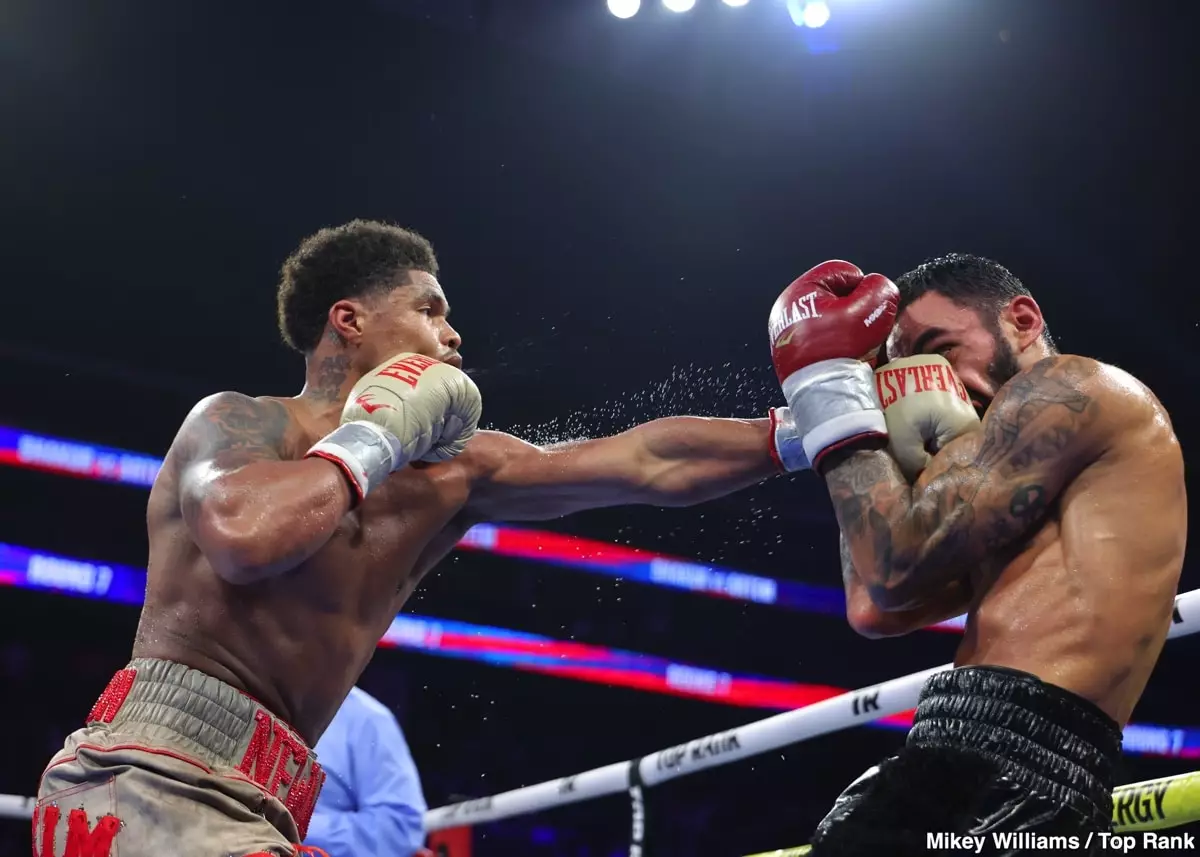Shakur Stevenson, the WBC lightweight champion with an impressive record of 22 wins and no losses, is gearing up to showcase a transformed fighting style in his upcoming title defense. Fans eagerly anticipate his clash with rising prospect Floyd Schofield on February 22nd in Riyadh. For years, Stevenson has relied heavily on a defensive style that emphasizes avoidance—a signature tactic since his amateur days. As he approaches his 28th birthday, questions arise: Is he capable of evolving his approach, and is there an urgency for change?
Historically, boxers tend to settle into established styles by their late twenties, and while Stevenson’s technique might have served him well, there is palpable pressure to adapt. In an age where excitement and engagement define a fighter’s marketability, the repercussions of a lackluster performance could resonate beyond just the ring. Should Stevenson revert to a passive strategy against Schofield, it could jeopardize his standing with influential figures in boxing promotion, like Turki Alalshikh, who seek fighters that provide thrilling encounters. The challenge is stark: failure to captivate an audience may lead to diminished opportunities on lucrative cards.
The upcoming match against Schofield presents a unique challenge for Stevenson. Schofield, known for his explosive power, poses a credible threat that demands a strategic evolution. In past encounters, Stevenson faced criticism for his tendency to evade rather than engage, leading to booed performances against formidable opponents. Although Stevenson claimed he stood firm against Artem Harutyunyan’s punches in his previous fight, there’s a marked difference between a weaker opponent and one renowned for their knockout power—like Schofield.
Engaging with Schofield could either reinforce Stevenson’s evolution into an aggressive fighter or expose him to vulnerabilities he has been reluctant to confront. Historical reflexes deeply rooted in his fighting style may hinder his ability to adapt fully, leading to further scrutiny if his performance lacks dynamism.
In the realm of boxing, identity is crafted through style, persona, and performance. Stevenson’s claim of being a “new version” of himself reflects a desire for progression, both in skill and in public perception. The sport demands not only skill but also charisma; Tyson Fury is often cited as an exception due to his unconventional yet entertaining persona outside the ring. Fighters who inject excitement into their matches tend to capture public interest, something Stevenson must prioritize moving forward.
The road ahead may be fraught with challenges for Shakur Stevenson, but embracing a new fighting style alongside a commitment to engaging with his opponents could solidify his status as not just a champion but also as a fan-favorite in the competitive world of boxing. As he steps into the ring with Floyd Schofield, all eyes will be on him to see whether he can truly unveil the enhanced version of himself that he promised to deliver.

